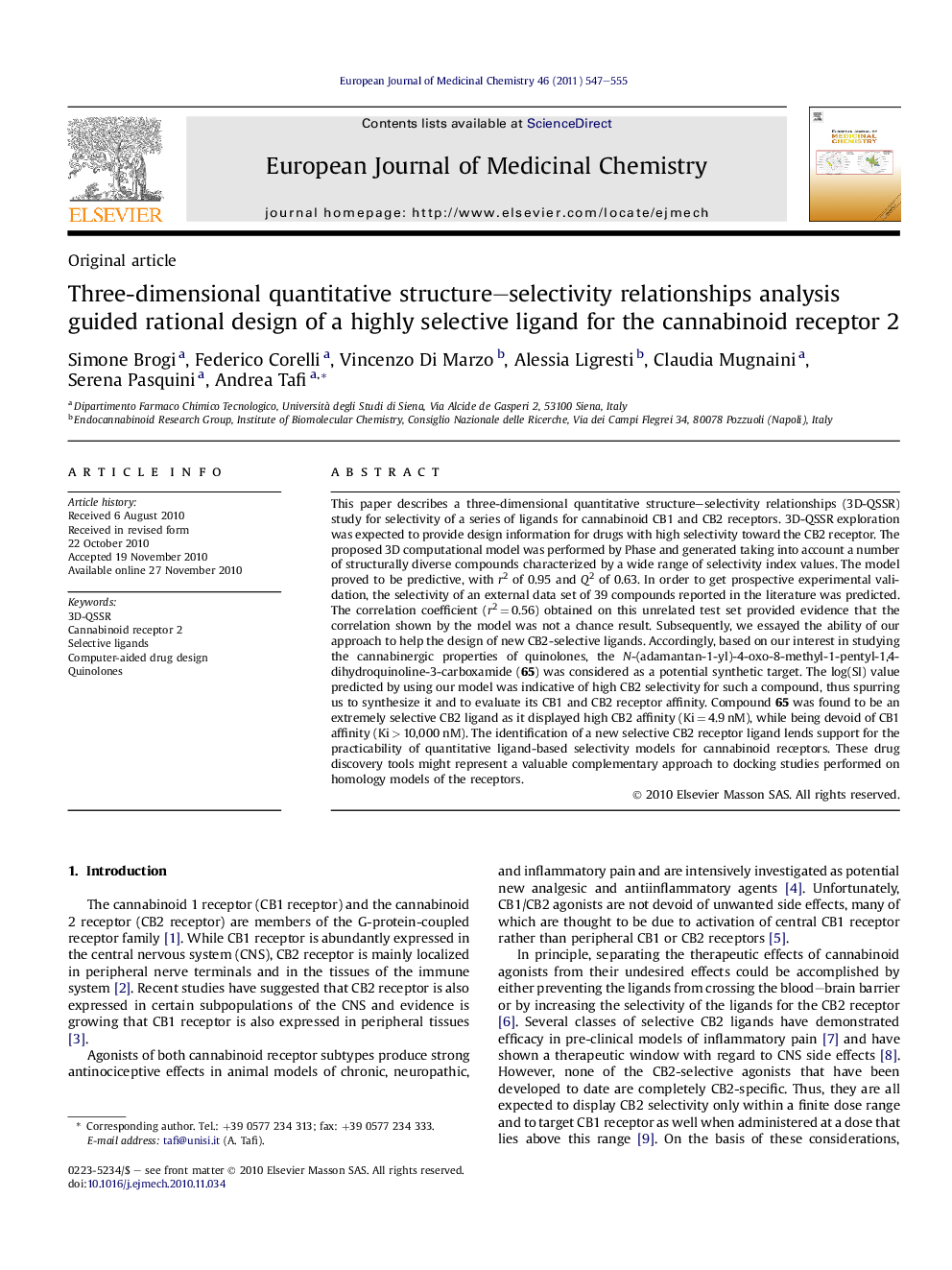| Article ID | Journal | Published Year | Pages | File Type |
|---|---|---|---|---|
| 1397618 | European Journal of Medicinal Chemistry | 2011 | 9 Pages |
This paper describes a three-dimensional quantitative structure–selectivity relationships (3D-QSSR) study for selectivity of a series of ligands for cannabinoid CB1 and CB2 receptors. 3D-QSSR exploration was expected to provide design information for drugs with high selectivity toward the CB2 receptor. The proposed 3D computational model was performed by Phase and generated taking into account a number of structurally diverse compounds characterized by a wide range of selectivity index values. The model proved to be predictive, with r2 of 0.95 and Q2 of 0.63. In order to get prospective experimental validation, the selectivity of an external data set of 39 compounds reported in the literature was predicted. The correlation coefficient (r2 = 0.56) obtained on this unrelated test set provided evidence that the correlation shown by the model was not a chance result. Subsequently, we essayed the ability of our approach to help the design of new CB2-selective ligands. Accordingly, based on our interest in studying the cannabinergic properties of quinolones, the N-(adamantan-1-yl)-4-oxo-8-methyl-1-pentyl-1,4-dihydroquinoline-3-carboxamide (65) was considered as a potential synthetic target. The log(SI) value predicted by using our model was indicative of high CB2 selectivity for such a compound, thus spurring us to synthesize it and to evaluate its CB1 and CB2 receptor affinity. Compound 65 was found to be an extremely selective CB2 ligand as it displayed high CB2 affinity (Ki = 4.9 nM), while being devoid of CB1 affinity (Ki > 10,000 nM). The identification of a new selective CB2 receptor ligand lends support for the practicability of quantitative ligand-based selectivity models for cannabinoid receptors. These drug discovery tools might represent a valuable complementary approach to docking studies performed on homology models of the receptors.
Graphical abstractA quantitative ligand-based selectivity model for CB2 receptor was developed, which was experimentally validated by the synthesis of a new extremely selective CB2 ligand. Such a prospective experimental validation lends support for the practicability of this kind of approaches as a valuable alternative to docking studies performed on homology receptor models.Figure optionsDownload full-size imageDownload as PowerPoint slideResearch highlights► An inclusive 3D-QSSR selectivity model was built for CB1 and CB2 receptors. ► Phase software turned out to be an appropriate tool for 3D-QSSR analysis. ► 3D-QSSR allowed design of a highly selective CB2 ligand. ► Quantitative ligand-based methods are a valuable complementary approach to docking.
